Lian Li Uni SL120 V2 Review
Introduction
Lian Li just updated their SL120 fans to meet their newest standards. Let's take a closer look at the improvements that the Lian Li Uni SL120 V2's are coming with!
Positive
- Good Noise-to-Performance
- Excellent Installation Methods
- Best-in-Class Build Quality
- Every RGB feature imaginable
- Best-in-Class controller Software
Neutral
Negative
- Max Performance could be better
- Did not outperform the Uni SL Infinities
What's in the Box?

Lian Li's newest and upgraded SL120 V2 Tripple-Pack of fans comes in a relatively similar package as every Uni Fan before. Once everything is unboxed, we will be left with the following items:
- Lian Li Uni SL120 V2 x3
- 4x Single Fan Connector
- 2x Extension Connector
- 3x Set of Screws
- Lian Li UNI SL Controller
- Controller Cables
The box itself is designed very similarly to every other packaging in Lian Li's Fan lineup. A bit of imagery and some short specs.
Down below we summarized the spec sheet:
| Name | Lian Li Uni Fan SL120 V2 |
| Size | 120x120x28mm |
| Speed | 2000RPM |
| Airflow | 64.5CFM |
| Static Pressure | 2.59mm/H2O |
| Noise | <29.2dbA |
| Connection | Proprietary until controller - 4-Pin PWM after |
| Bearing | Fluid Dynamic Bearing |
| RGB |
2x RGB Lines across fan frame (both sides) |
| RGB Connection | Proprietary until controller - 3-Pin ARGB after |
Installation
In the past, Lian Li has been known for the industry-leading installation and mounting mechanic first introduced with their original Uni fans.

In order to get the fans started, we first need to correctly connect the included SL- Lian Li controller. By connecting the controller's 4-Pin PWM, 3-Pin ARGB and USB 2.0 header to the motherboard, we can make use of set controller. To provide it with power, we have the possibility to connect the 2x SATA power connectors. Here, keep in mind that one of them is mandatory whilst the second one only becomes required once we exceed a total of 12- fans per controller.

To connect the fans to the controller, we have a few possibilities. Included in the box, we will find 4x single-fan cables. These can be connected with their flat end to one of the controller's ports, while the other side can be pressed into the fan's connector.
Already here, we can find one of the changes introduced with Lian Li's V2 refresh. Previously, all Uni Fans were connected using a thick piece of plastic which was meant to be connected to the fan in a similar fashion as the days-chaining feature. With the new V2 lineup, Lian Li stopped using this method in favor of a smaller, thinner approach that connects to the fan's secondary -male port hidden underneath the actual -male port.
Although this method is new, we cannot see any sort of improvement with it, it may be easier to hide, but other than that, it is just a change, not a negative nor a positive one.

In order to connect more fans to the setup, we can add additional fans to the initial one by sliding them together, creating a block of fans not greater than 6.
If however, we would like to separate the fans, we can repeat the same process as with the initial fan, or we can make use of the included extension cable. This can be mounted similarly as the single cable, but to a fan instead of the controller.

Once every fan is connected and the PC is running, we can install Lian Li's L-Connect 3 Controller Software.
Usually, we are not big fans of proprietary Fan software. They tend to be poorly developed, buggy, and overly excitingly looking whilst not giving you any features that a motherboard software couldn't.
In case you want to avoid using Lian Li's L-3, you are open to installing it, and applying the Motherboard control setting buttons for Speed and Light. Once this mode is on, you can continue using your Motherboard Software for every kind of control while the PWM and 3-pin ARGB cable of the controller, which we connected earlier, will be used as a passthrough connection.
Appearance
On the surface, Lian Li's new SL120 V2 refresh looks relatively similar to the original one.
The Fan is mostly black with an all-black frame and fan wing. In the center of said, wing, Lian Li added a metal Lian Li logo instead of the usually used sticker.
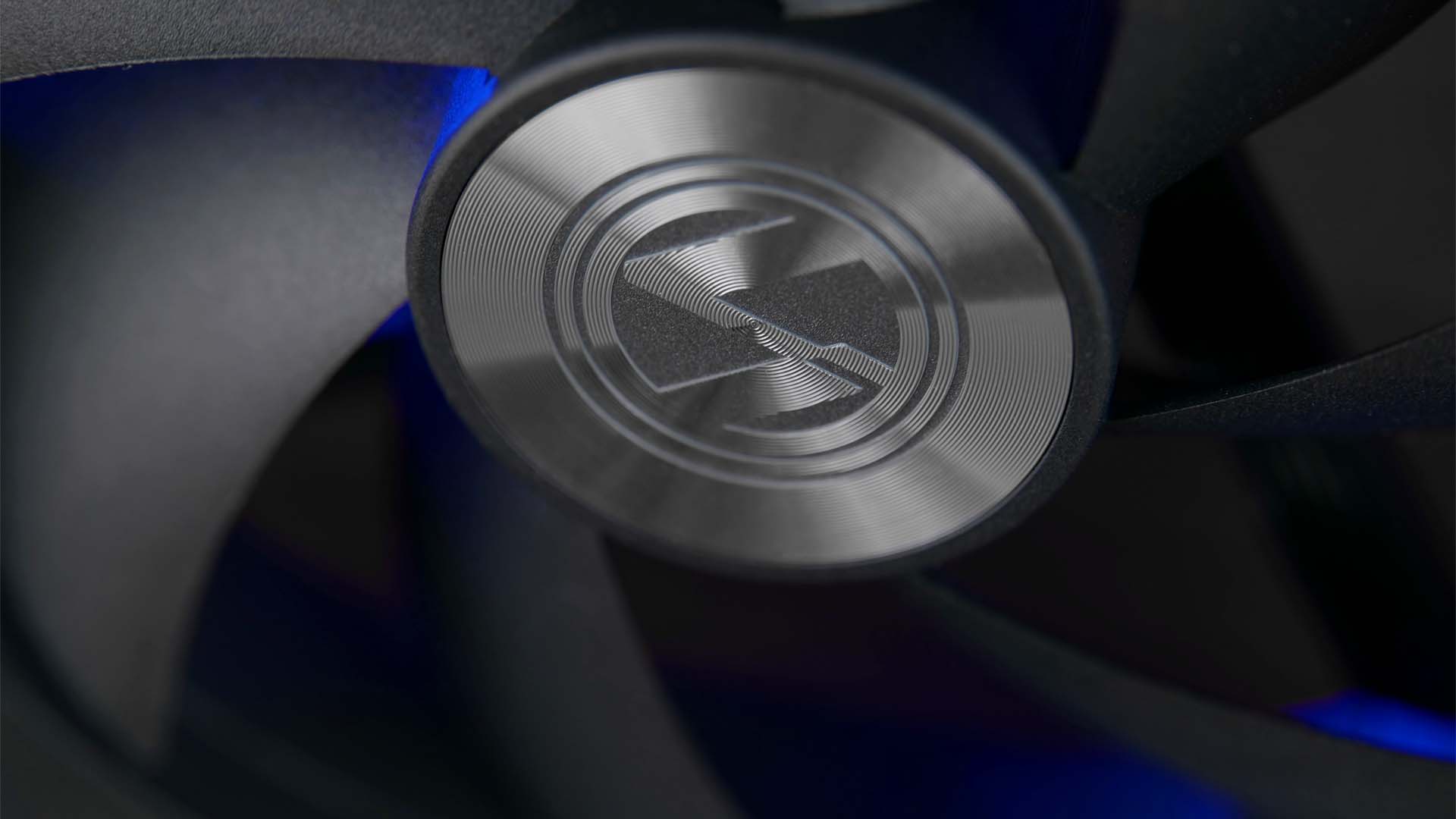
The main optical feature of the SL120 is still its ARGB implementation. On two of the fan frame's sides, there are 2 enormous RGB strips traveling down the fan. This can be found on both sides of the fan, making it a total of 4 RGB strips.
Although ARGB strips are nothing special nowadays, this implementation can still be considered as outstandingly well executed. With no actual LED's visible, Lian Li's approach looks incredibly clean with no points to critique.
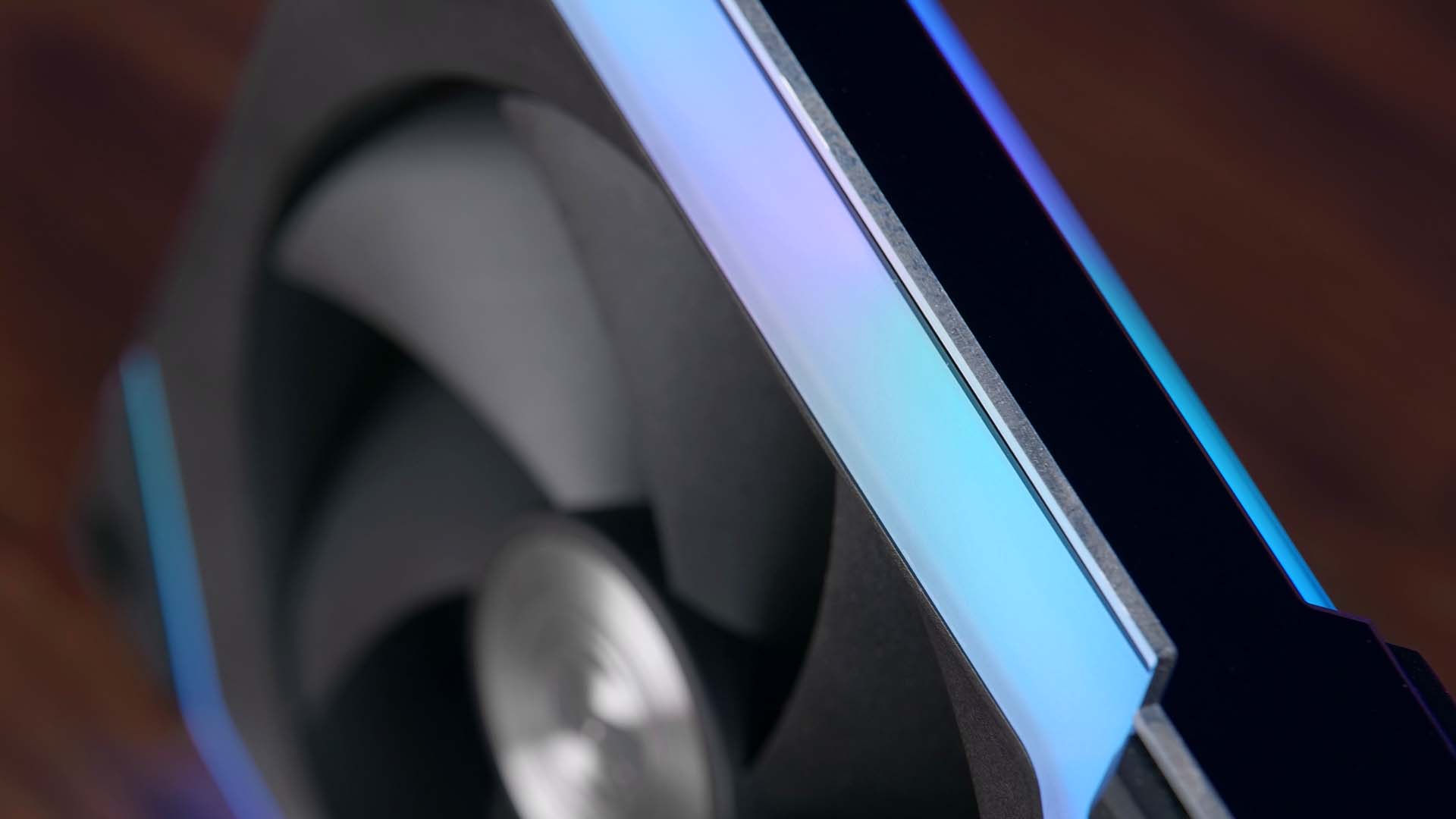
Other changes found going from V1 to V2 can be boiled down to accent improvements. An example of this would be the matt-black metal-feeling bracket on the sides of the frame. These brackets have been slimmed down and given a slightly different look. Again, something that is noteworthy, but not necessarily an improvement.
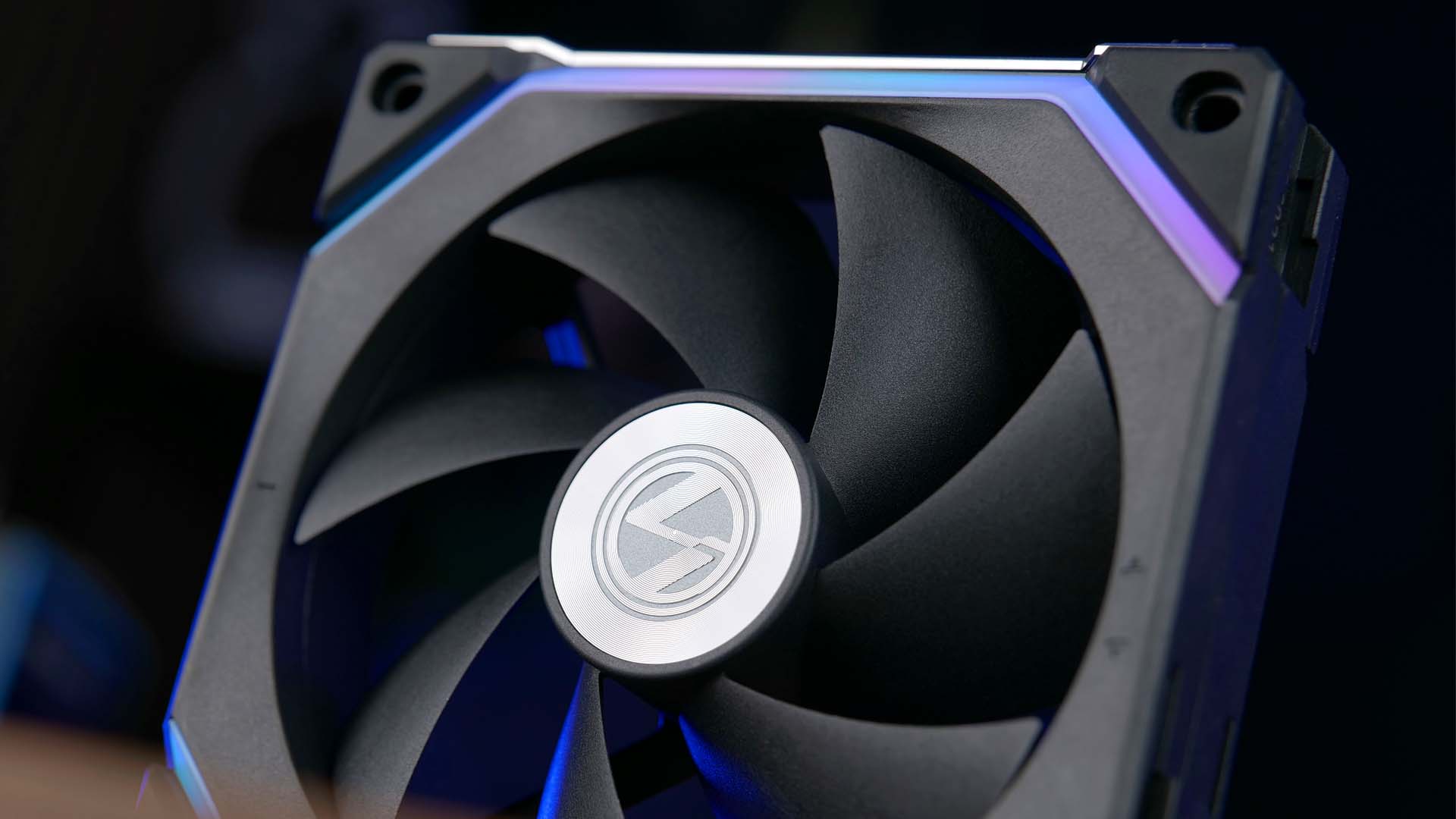
Overall, the SL120's appearance is incredibly clean, there are no outstanding aspects that might give it a cheap look. Everything looks incredibly well executed and thanks to the fan's extremely thick frame, it is also incredibly sturdy.
Benchmark
We benchmarked Lian Li's new SL120 V2 refresh using our regular Case- almost Heatsink benchmark.
 copy.jpg)
Letting them spin at their max 2000RPM, the SL120s managed to keep the CPU at 46.7°C above ambient. This positions them slightly behind Lian Li's AL120 V2, an expectable result given that the spec sheet already stated that every metric was slightly behind them as well.
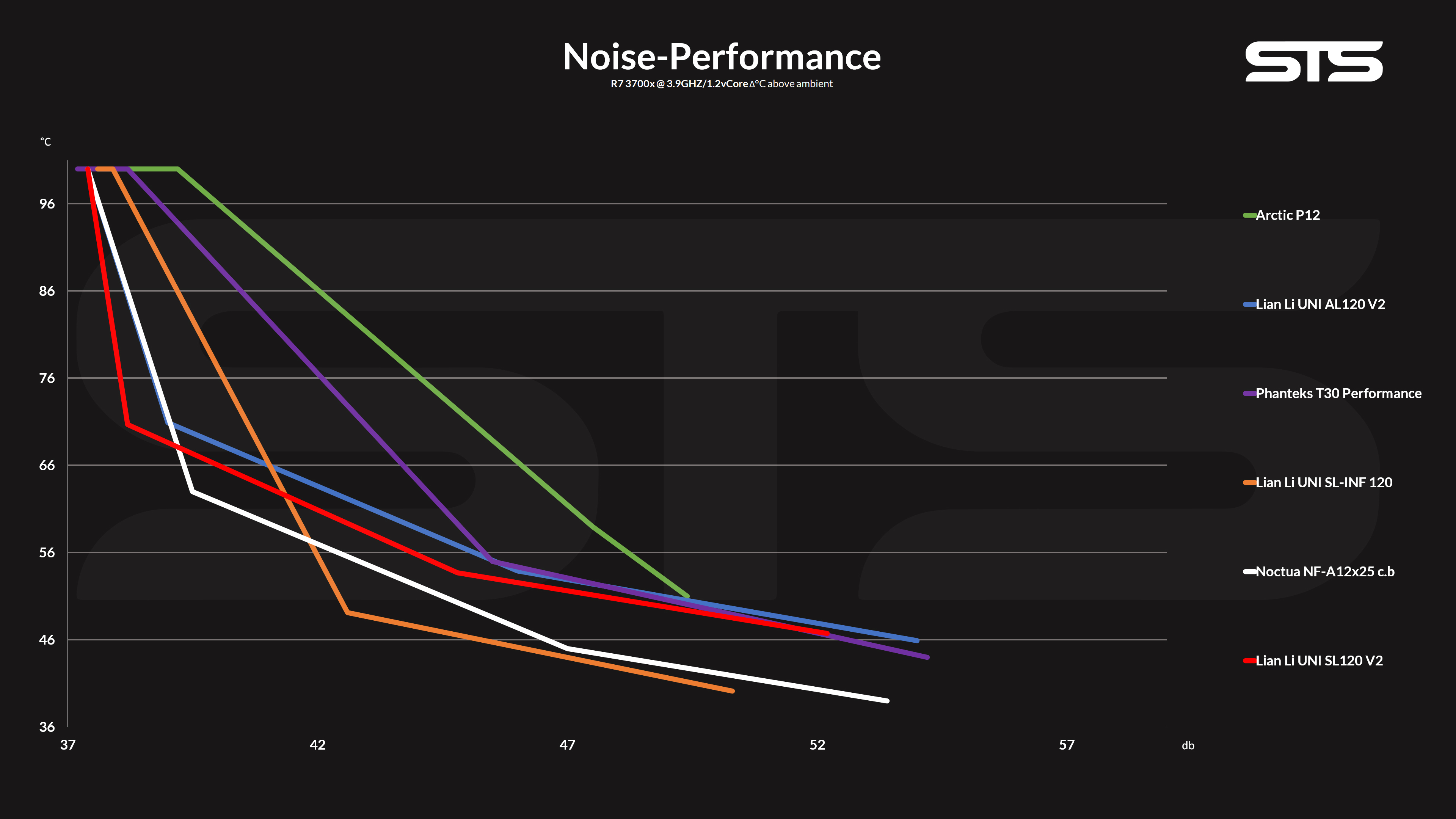
On the Noise-to-Performance graph, we were able to observe something quite interesting, although the AL120 V2s had a slightly better Max-Performance result, the SL120 V2s were ahead with their Noise-to-Performance ratio as soon as the slider was touched.
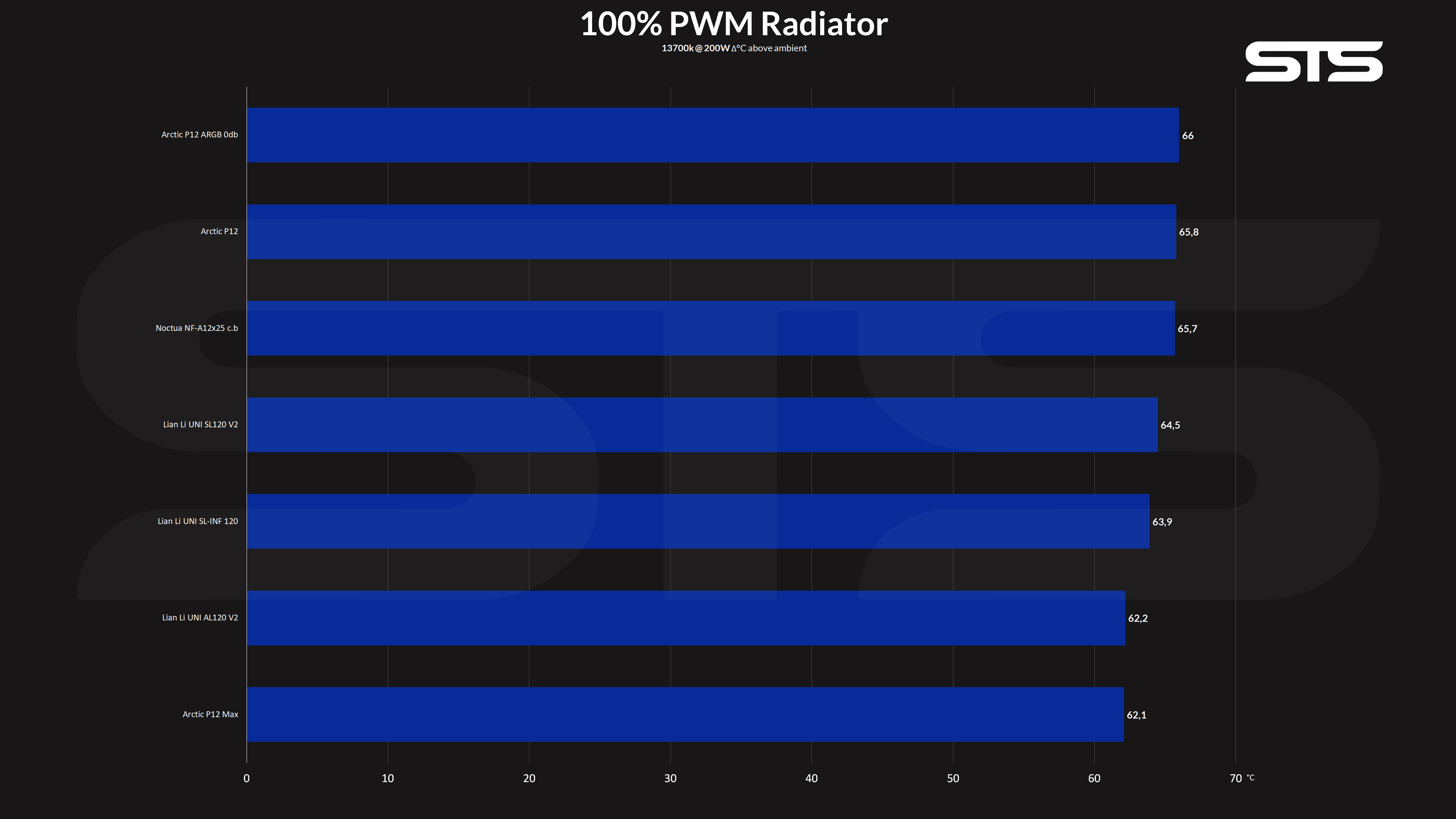
We also tested these new fans on top of an Arctic Liquid Freezer II 240 with a 200w pushing 13700k beneath.
Used on a radiator, the SL120s were able to keep the CPU at 64.5°C above ambient, roughly repeating the same result as before compared to the AL120s.
Lowering the Noise in small increments did not change this result with the AL120s having the lead for all of the run.
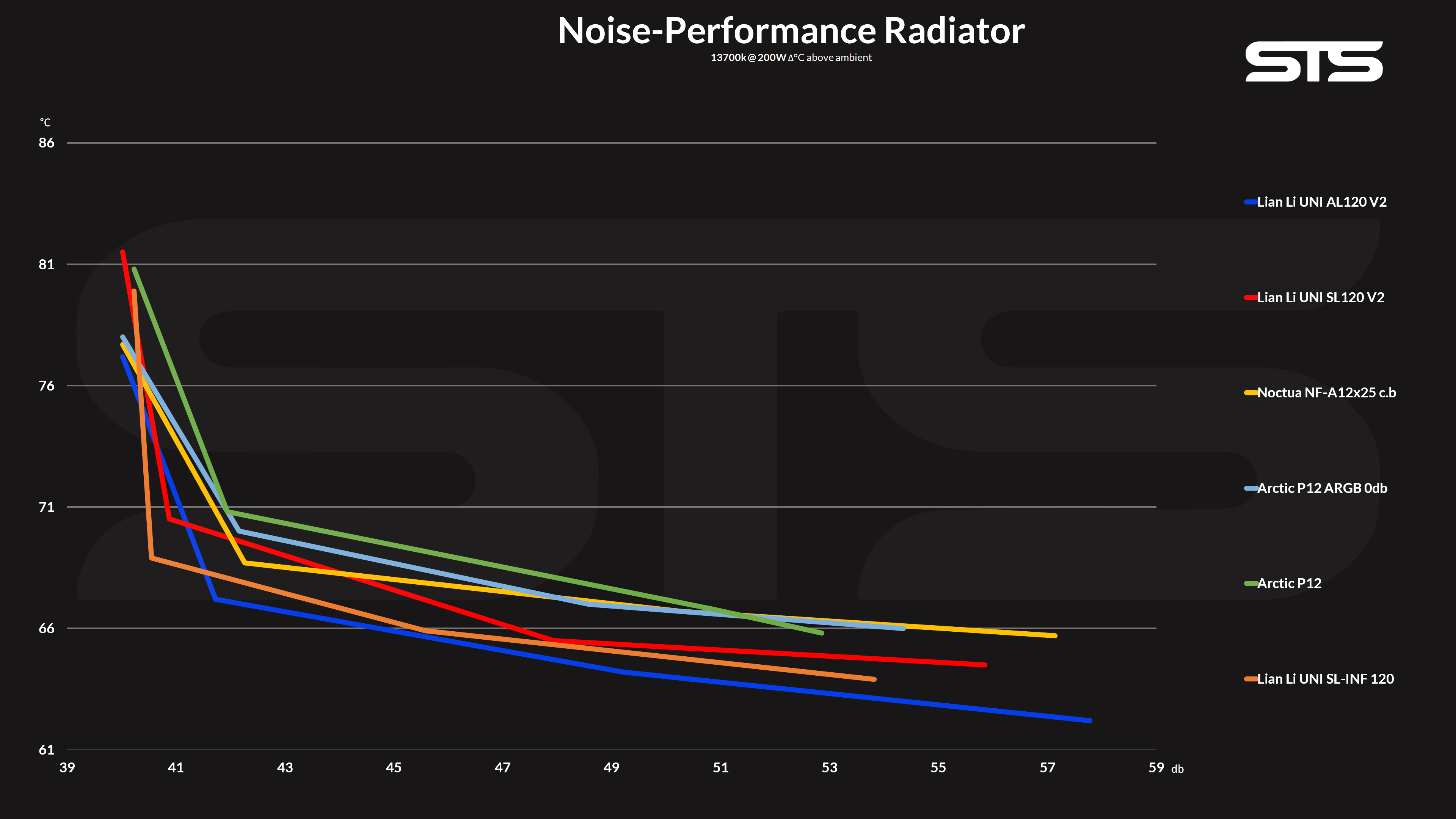
Conclusion

Comparing Lian Lis full V2 refresh by using our benchmark results, it becomes apparent that the SL120 V2s are the better case fans while the AL120 V2s are the better radiator fan.
However, we also have to note that the difference between the two fans is minimal at best, in all scenarios. Used on a day-to-day basis, it is very unlikely that a performance difference will ever be noticed.

Compared to all the fans we have benchmarked before, the new SL120 V2s did not stand out in a negative way. Their max performance could have been slightly better, but they definitely scored some major points with their relatively good noise-to-performance ratio.
Additionally, they outperformed the Noctua NF-A12x25 on top of a radiator, which is more than impressive.
On the build quality side, it is still a UNI fan. Thanks to the incredibly thick fan frame, the fan is nearly indestructible.
But the most amazing feature still has to be the installation method. Having the possibility to daisy-chain multiple fans together creating a giant block makes them incredibly easy to handle and creates the least amount of cable cluster.

For the RGB- seeking people, there is also a lot to get from these fans. The combination of Lian Lis L-Connect 3 Software and the 4x RGB strips traveling down the fans makes it incredibly easy to customize the fan's appearance to your own liking.

Overall, we have very little negative to point out with Lian Lis V2 refresh. Although we would have wished for slightly more -bang- whilst running at top speed, the Noise-to-Performance ratio is still very good, which is the most important point about a fan.
This paired with the Fan's incredibly good build quality makes it easy for us to recommend it for nearly every use case. But keep in mind that ontop of radiators, the AL120 V2 will perform slightly better.

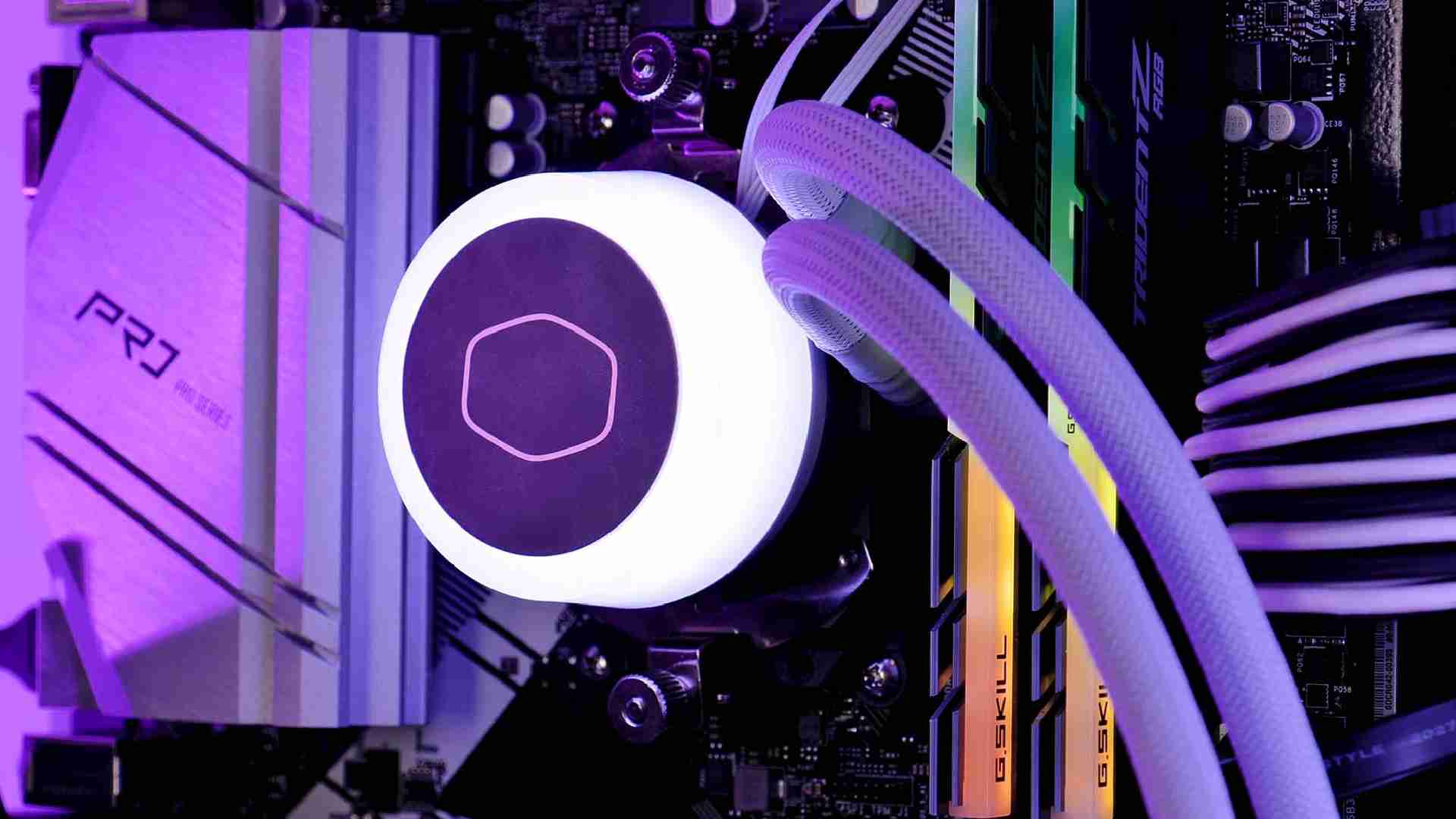
Cooler Master MasterLiquid ML240 Illusion Review
Cooler Masters newest ML240 Illusion White offers not only a great Noise-to-Performance ratio, but it also features Cooler Ma
Read More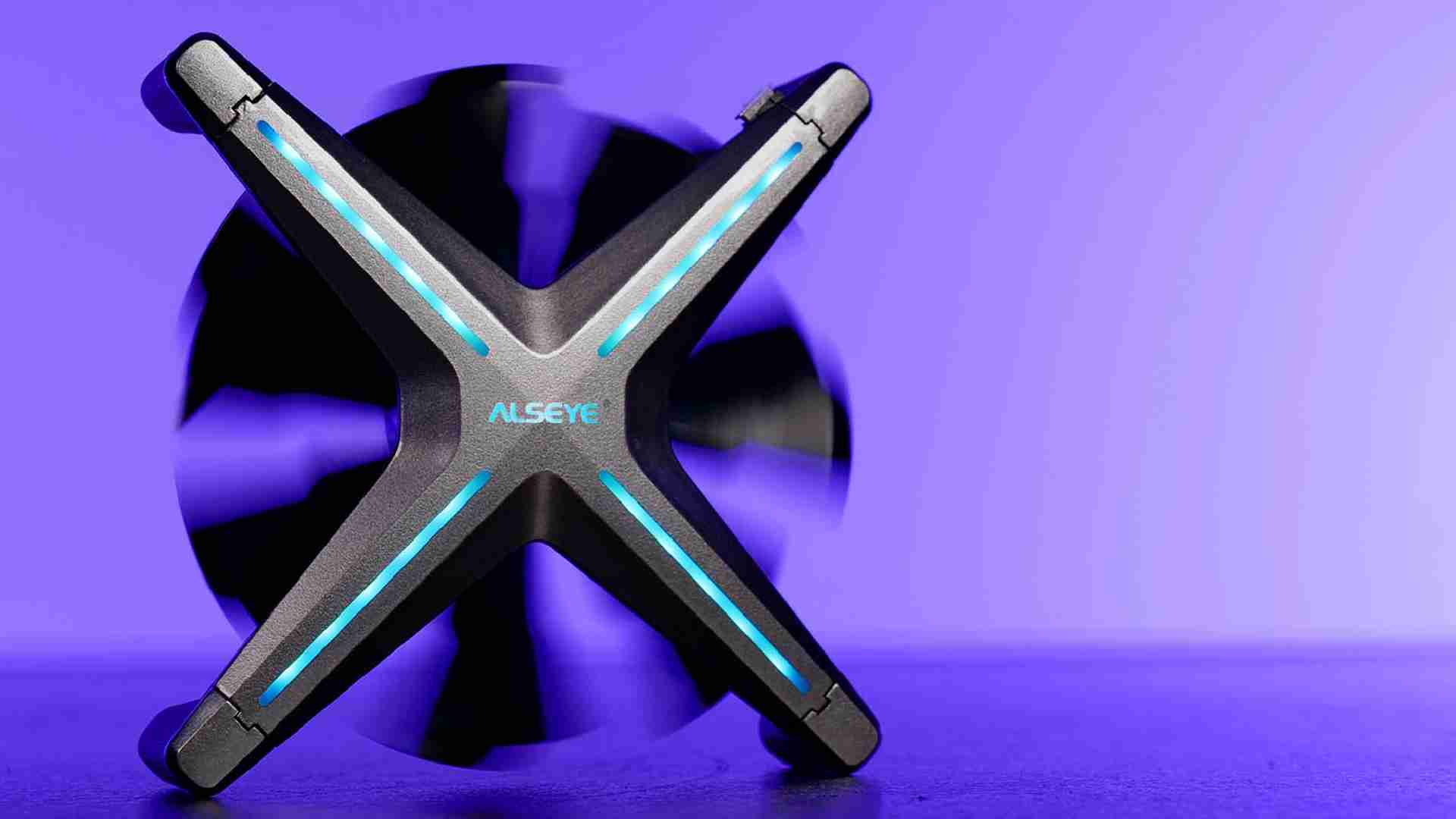
ALSEYE X12 Fan Review
Standard is definitely not a word inside ALSEYEs dictionary. Their X12 lineup of Case and Radiator fans can be seen as proof.
Read More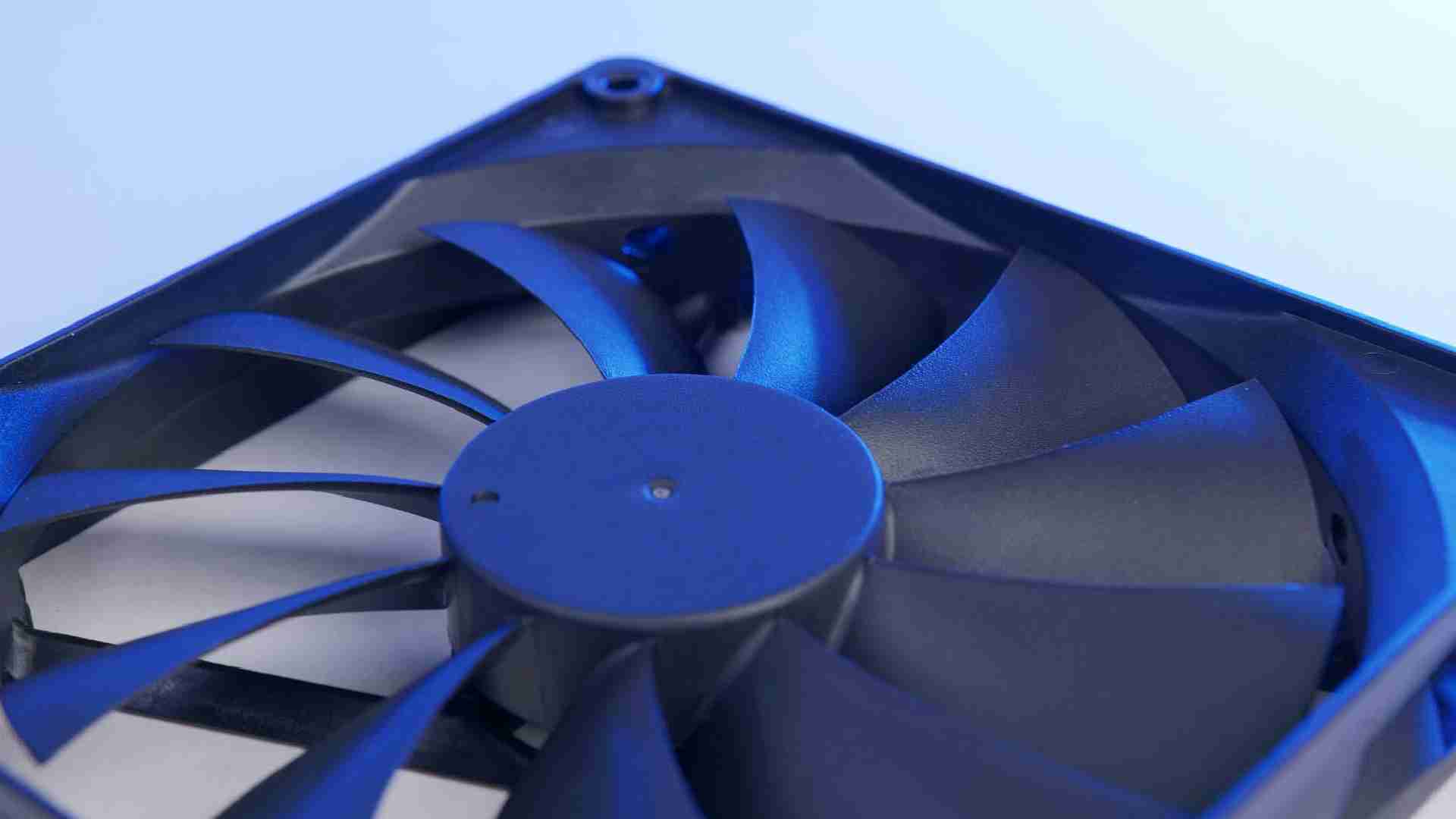
Alphacool Core 140 2000RPM Review
Apart from being incredibly affordable, Alphacools Core lineup of fans is known to maximise on performance whilst forgetting
Read More
MagniumGear Neo Cube 2 Review
The MagniumGear Neo Cube 2 takes a tried-and-tested form factor while giving it its own spin! Lets have a closer look at the
Read More